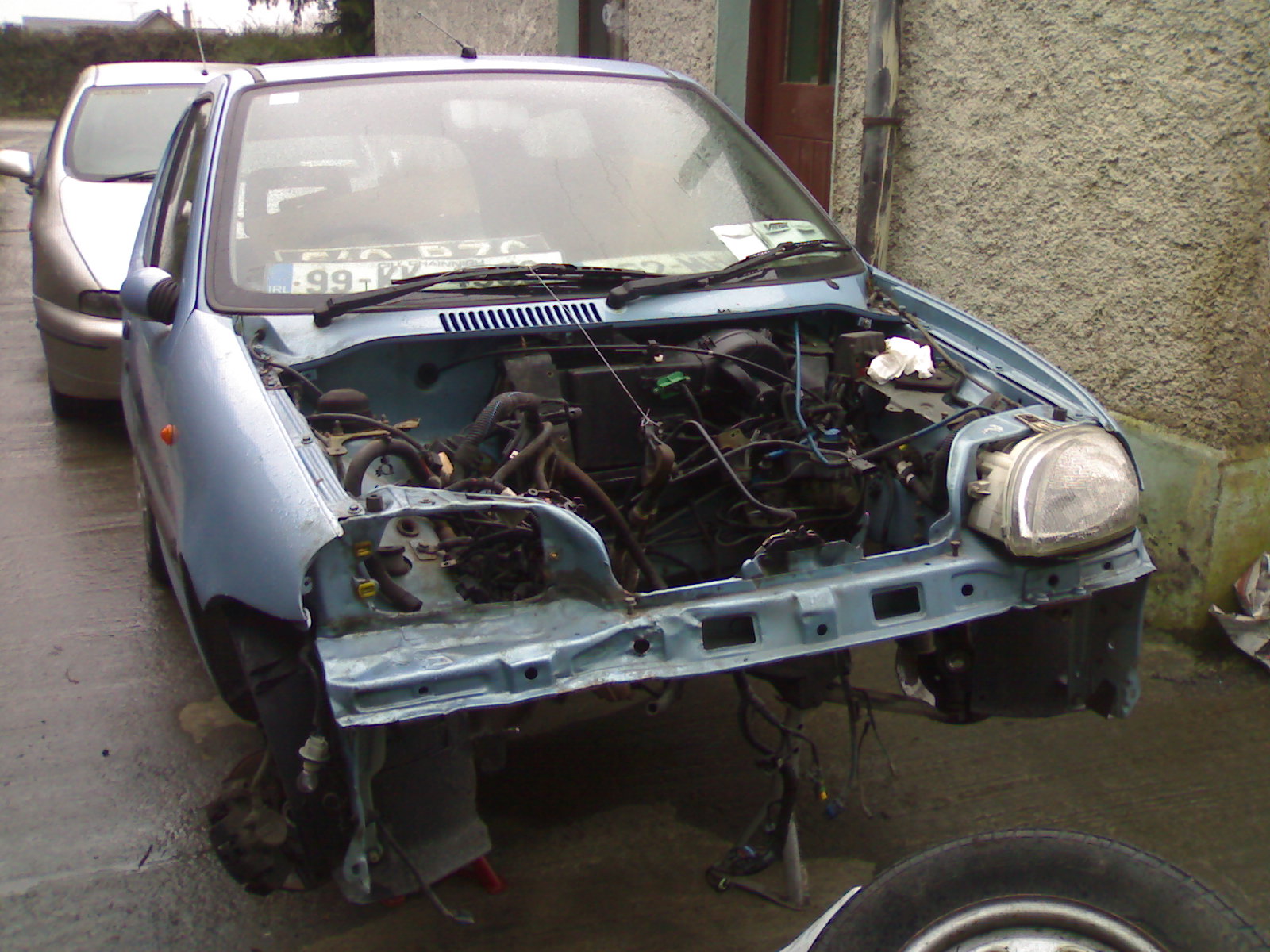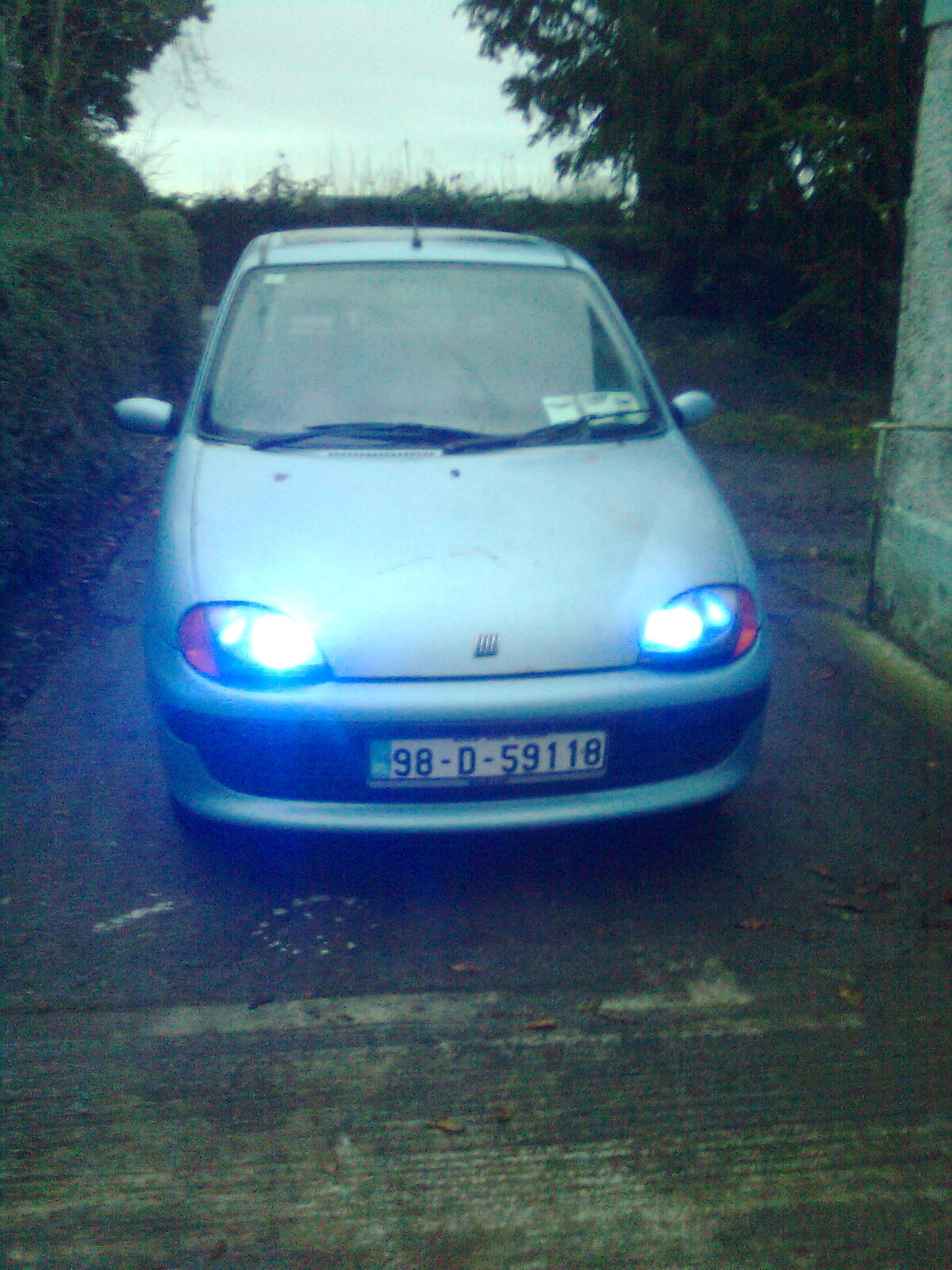my car isnt modified but its still had some pritty horific things done to it. by myself.
You are using an out of date browser. It may not display this or other websites correctly.
You should upgrade or use an alternative browser.
You should upgrade or use an alternative browser.
bodge jobs-daring repairs-pls tell us ur stories
Currently reading:
bodge jobs-daring repairs-pls tell us ur stories
zazadavison
New member
My old Brava blew 2 of the little caps off the Rocker cover, and oil would spill onto the maifold, causing lots of nasty smoke and the ocassional fire... couldnt get hold of the caps anwhere, not even at the local scrappy and then realised that the old sparkplugs out of my dad's car fitted with a bit of PTFE tape and some persuasion...they lasted over 30,000 miles!
Being an old git & working on old Ford Cortinas years ago, one fault they had was noisy rear diffs. A more often than not fix, was to put nylons in the noisy diff. They eventually fused to the internals & did indeed quieten things downWell for a while anyway.

Sawdust works too (and on gearboxes).
I worked in a garage in the 70's. I have seen a K70 sprouting grass through newly painted wings where someone bodged it with newspaper and mud; old tights used as emergency fan belts, and eggs whites poured into a leaky radiator to seal it (it worked too).
Bravo98paratrooperzimmer
New member
well i wouldnt advise anyone to ever drive a car thats wheels come undone, however, its just one of those things, i have a coop now, and its perfect, cant see anything bodge happening on this car,, if a pipe is split this puppy wont be getting soldered haha
- Joined
- Apr 8, 2004
- Messages
- 25,219
- Points
- 3,671
It's just a useless thin plastic pipe on the air inlet. Don't even know what it's for the car ran ok with it disconnected 
Bravo98paratrooperzimmer
New member
haha hi wasnt having a dig at you,, and looking at my record on this thread im more of a lunatic than alot , happy new year
Don't forget a very popular activity of the 70's and 80's.....
Cut and shut. Not done it, but seen it done.
Cut and shut. Not done it, but seen it done.
Don't forget a very popular activity of the 70's and 80's.....
Cut and shut. Not done it, but seen it done.
My dad had had a 1980 Alfa Romeo Giulietta (yes, 1.8 twin cam 8v, rwd, transaxle unit, 122bhp, de-lortos, no exhaust, what a car
And we still do it today, this is our most recent crash repair. I dont have a pic of when we got it, it was in bad shape but you get the picture:


Were not your average garage!!!
- Joined
- Oct 20, 2007
- Messages
- 4,940
- Points
- 744
bought a 106 recently that was rusted beyond beleif at the back. angle grinded the two rear end supports off and smoothed it out. painted it with hammerite and passed a mot with nothing but the boot floor holding the rear togeather.... drove it for 6 months then scrapped it  still made a profit lol. joyus
still made a profit lol. joyus
engine mounted snapped in two on the motorway, engine slipped, hit the ground - ripped out a few cables and upset the ECU.
Pulled into the services, jacked up the engine and then used my tow rope to tie the engine onto the strut brace then removed the jack. Engine was back in the right place. Rejoined the damaged cables and I was on my way.
Another time I lost the alternator belt. Didn't have time to fix and needed the car. Kept driving around for around a week before it began struggling to start. Still didn't have time, so got another battery out of the garage and put it in the boot next to mine and wired them together. It lasted another couple of days until I had time to fix it.
Pulled into the services, jacked up the engine and then used my tow rope to tie the engine onto the strut brace then removed the jack. Engine was back in the right place. Rejoined the damaged cables and I was on my way.
Another time I lost the alternator belt. Didn't have time to fix and needed the car. Kept driving around for around a week before it began struggling to start. Still didn't have time, so got another battery out of the garage and put it in the boot next to mine and wired them together. It lasted another couple of days until I had time to fix it.
Last edited:
johnstoke
Member
Years ago I had a honda cbx750F. These had a problem whereby the 'nibs' on the big end shells were marginal, and if the bike was used enthusiastically, the nib chattered against the crankcase casting, wore, then the shell would spin on the crank, cutting oil flow and wrecking the crank.
The first time this happened, the crank went away for grinding and mtal spraying, and I rebuilt the engine at a significant expense (close on £800 for parts, and this was in 1989!)
Ran great after rebuild for 2 years and 25k miles (including an extended tour of europe), then the nibs failed and the shells spun on cylinder 3.
I stripped the engine, and found that where the shell had spun, the metal spray had started to crack.
As money was tight, and the other bike I had at the time (rd400) was a pile of poo,I bought new shells, put these on the next cylinder, and put the slightly worn shells onto no.3 (with the metal spray starting to crack)
Rebuilt the engine (in the kitchen, very understanding parents.......) and put it back in the bike
No noise whatsoever from the engine on startup, but I know it's on borrowed time.
I do have a conscience, so I didn't want to sell it privately, so I p/exed it (so the new owner would have 3 months warranty, plenty of time for it to start knocking and get fixed under warranty) and also my vauxhall chevette at a dealer that has ripped off friends of mine in the past, for a mk2 cavalier SRi, in which I got caught doing 112mph 6 days later................
Pity about the bottom end troubles on the CBX, a very underrated bike, the missing link between the old GPZ's etc and the GSXR/FZ750
The first time this happened, the crank went away for grinding and mtal spraying, and I rebuilt the engine at a significant expense (close on £800 for parts, and this was in 1989!)
Ran great after rebuild for 2 years and 25k miles (including an extended tour of europe), then the nibs failed and the shells spun on cylinder 3.
I stripped the engine, and found that where the shell had spun, the metal spray had started to crack.
As money was tight, and the other bike I had at the time (rd400) was a pile of poo,I bought new shells, put these on the next cylinder, and put the slightly worn shells onto no.3 (with the metal spray starting to crack)
Rebuilt the engine (in the kitchen, very understanding parents.......) and put it back in the bike
No noise whatsoever from the engine on startup, but I know it's on borrowed time.
I do have a conscience, so I didn't want to sell it privately, so I p/exed it (so the new owner would have 3 months warranty, plenty of time for it to start knocking and get fixed under warranty) and also my vauxhall chevette at a dealer that has ripped off friends of mine in the past, for a mk2 cavalier SRi, in which I got caught doing 112mph 6 days later................
Pity about the bottom end troubles on the CBX, a very underrated bike, the missing link between the old GPZ's etc and the GSXR/FZ750
Pity about the bottom end troubles on the CBX, a very underrated bike, the missing link between the old GPZ's etc and the GSXR/FZ750
What about the Kawasaki KZ 1000 that would seize on the middle cylinder because it couldn't get enough cooling? If it was bad enough (which it usually was) it meant a rebore on all three cylinders, as you can't have one piston bigger than the other two can you?
Bravo98paratrooperzimmer
New member
Or can you? Haha ultimate bodge,
I think the winner so far is the engine mount breaking. And bodging it together again
With a tow rope haha so funny I nearly cried,
I think the winner so far is the engine mount breaking. And bodging it together again
With a tow rope haha so funny I nearly cried,
I wish I could add my own horror story to this collection but my bodging has never gone much further than holding non-vital parts in place with duct tape.
What this thread reveals is the fine line between genius and lunacy, and most of you lot are total lunatics!
What this thread reveals is the fine line between genius and lunacy, and most of you lot are total lunatics!
Induction kit is still sealed with plasters haha working perfectly
I wish I could add my own horror story to this collection but my bodging has never gone much further than holding non-vital parts in place with duct tape.
What this thread reveals is the fine line between genius and lunacy, and most of you lot are total lunatics!
You want lunacy how about this? During my karting days in the 70's there was a period when a bad batch of pistons managed to find their way over from Italy (no suprises there then). The problem was they would crack from the fillet of the front land, and when it was bad enough, the front of the piston would drop into the bottom of the engine.
So during the inteval between the heats and the final it was common practice to lift the barrel and check. If you found a crack it usually meant an engine change.
Anyhow, during a round of the British Championships, one driver found aforementioned crack in piston, but didn't have a spare engine with him. Thing is he had heard that if you wanted to stop a crack spreading, the trick is to drill a hole at the end of it; which he did.
25 laps at 14,000 rpm later not only was the engine still going strong, when we lifted the barrel the crack hadn't spread any further.
Similar threads
- Replies
- 19
- Views
- 364
- Replies
- 23
- Views
- 704

